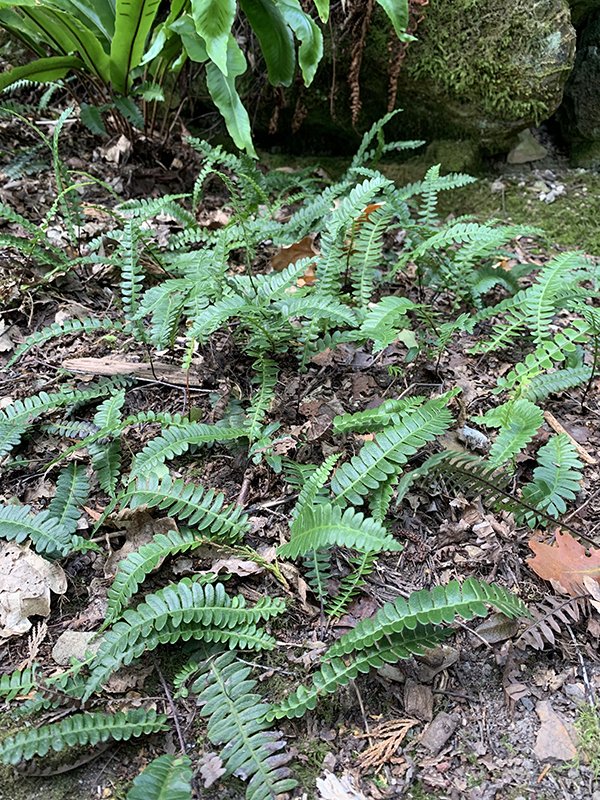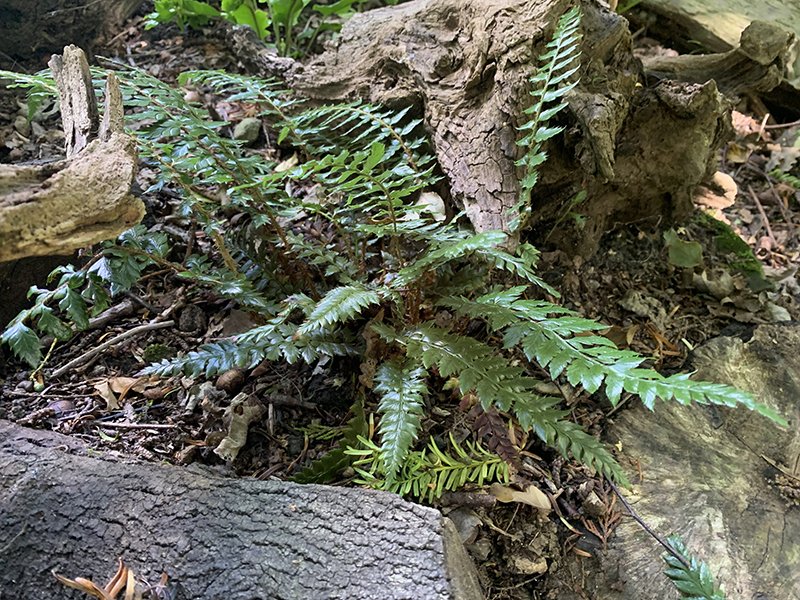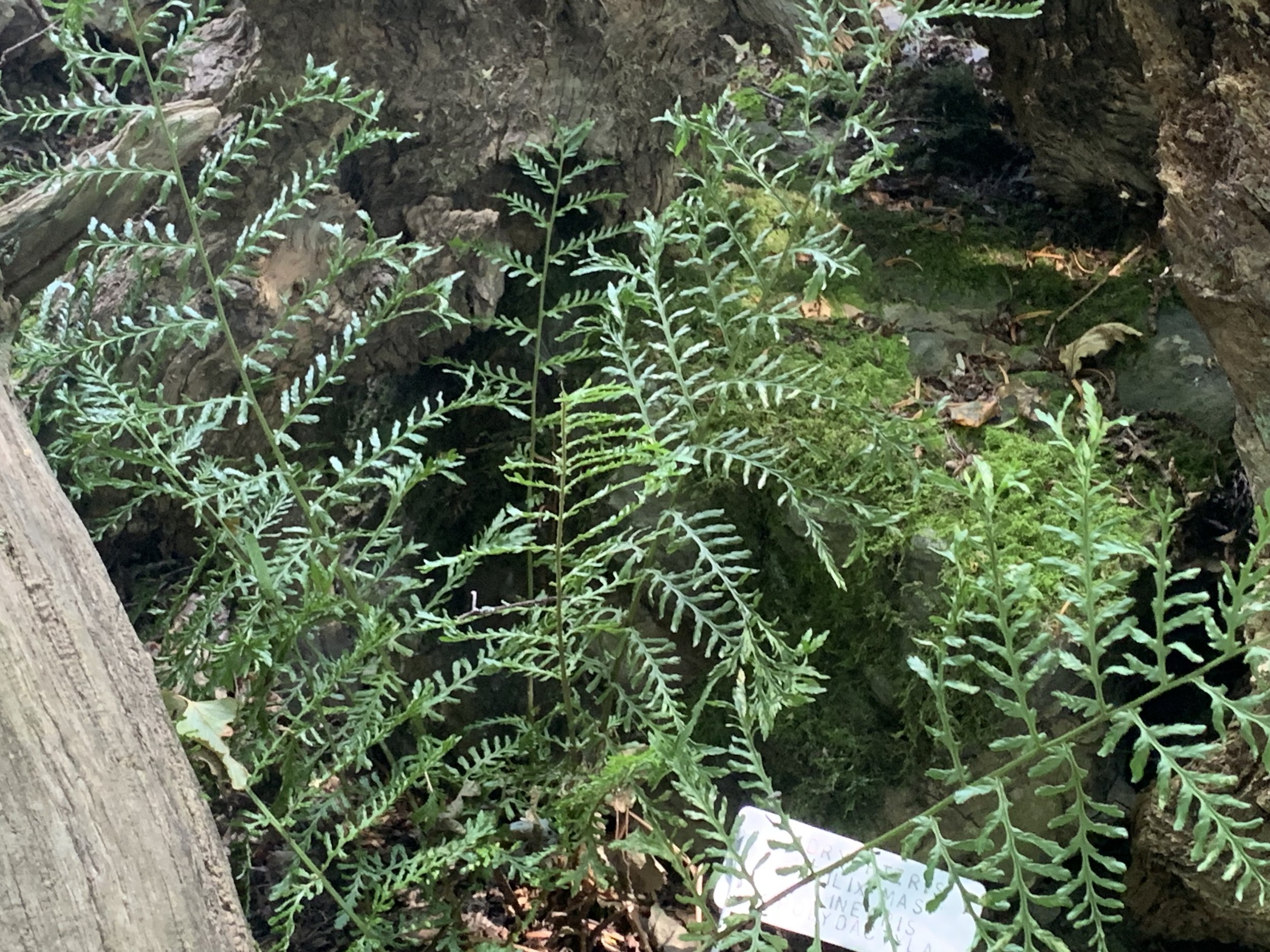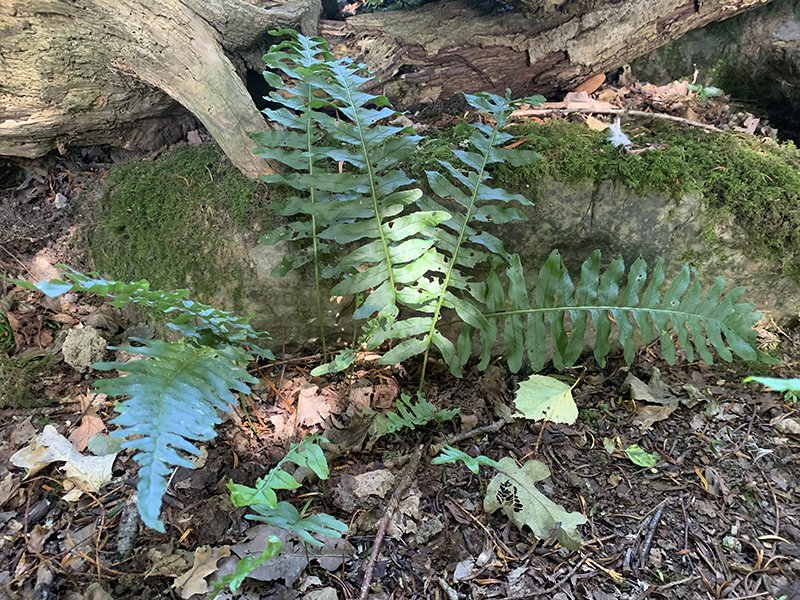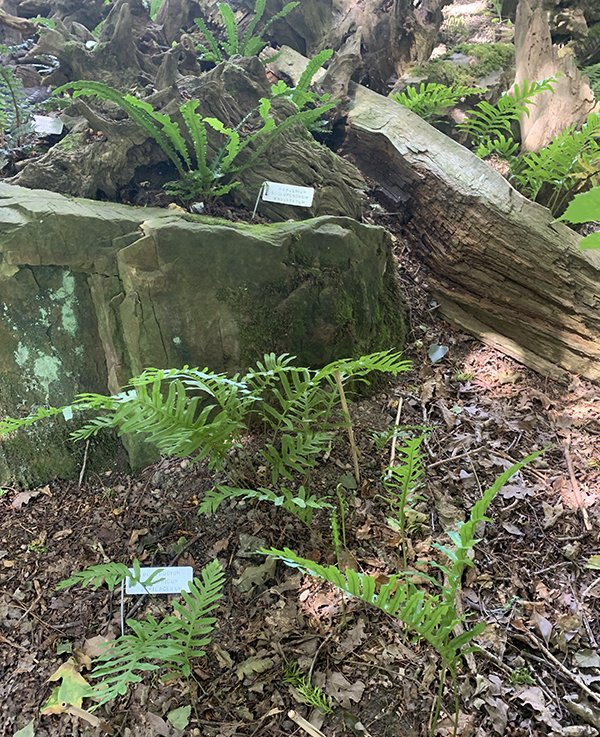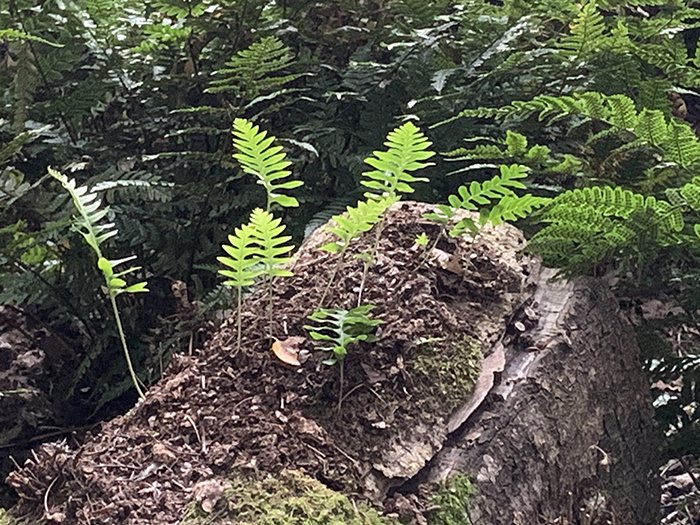More from the Rock Garden....
After the very odd winter we had, everything started a month later than usual, but they’ve caught up now. The cold snap we had in December, when the temperature dropped from plus 12o to minus 7o almost overnight, caught a lot of plants unprepared so we got off very lightly. I’m told by those who know that while the frost was trapped in many gardens, in the Rock Garden it just rolled off the hill. We had a couple of casualties, but the rest are busily making up for lost time. With the exception of the very dry spell at the beginning, that winter was followed by one of the wettest summers on record; the ferns are loving it!
Last year’s new plantings are generally working well, albeit very slowly at times. In my last blog, I said that ferns can take a while to settle in. A case in point is the Blechnum penna-marina (Alpine water fern) down by the Ash tree opposite the pond; four years after it was planted, it has finally decided it likes it at Riverhill and is flourishing this year. Plenty of other ferns are enjoying it too, and we have sporelings (the fern equivalent of a seedling) appearing everywhere.
Images above: LEFT: Blechnum penna-marina RIGHT : Polystichum setiferum sporelings growing on the rocks
Generally it’s been a good year for Wisterias, and our two beyond the end of the Rock Garden are no exception. The ground is covered with new runners, and this is the first year since the Rock Garden was reopened in 2019 that I’ve seen them producing blossom. It was a stunning sight.
Wild Wisteria in bloom
The most significant change this year has been our take on a stumpery. Stumperies date from Victorian times when the aim was to create a rock garden made out of tree stumps. The big ones, such as Highgrove and Biddulph Grange, do just that. We had neither the space nor the material for that – apart from the fact that a tree stump can weigh over two tons and there’s no way of getting heavy lifting gear down there, we wanted to work with material available at Riverhill to avoid the risk of importing disease. The only tree stump we have is the Holm Oak that was already there; using that as an anchor, along with the rocks, the aim has been to create a sculpture in wood that is interesting in itself and shows off the ferns to best advantage. I was told recently that it looks like a lunar landscape; I’m not arguing with that.
The Stumpery
The area has been planted with a wide variety of ferns. Across the back is a range of Dryopteris, many selected for their height, to provide a backdrop; at the front we’ve put ferns selected for contrast and close enough to the path to be appreciated.
There are two types of Adiantum – Adiantum venustum (Himalayan maidenhair) and Adiantum pedatum (Northern maidenhair or five finger fern). The Polystichum ‘Shiny Holly Fern’ is doing very well here; this is a variant of the alpine form of Polystichum neolobatum (Asian sabre fern) that was recently discovered in America. The various types of Asplenium (Hart’s tongue) are also doing well, as is the Dryopteris filix-femina ‘Linearis Polydactyla’ (better here than anywhere else it’s been tried in the Rock Garden).
The most recent arrival is the very un-fernlike Pellaea rotundatum (New Zealand button fern) that I found at Wisley last month; it can be temperamental, so fingers crossed on this one. Also for the Polypodium interjectum that spored onto the Holm Oak last year; it’s getting lots of leaf mould and TLC and is hanging on so far.
Images above: LEFT is Polystichum ‘Shiny Holly Fern’, CENTRE is Pellaea Rotundatum. RIGHT is Dryopteris filix-mas ‘Linearis Polydactyla’
The only real issue we’ve had is that something finds the tops of the emerging fronds (the fiddleheads) of the Adiantum and Polypodium very tasty and there have been signs that they’re being nibbled. I’m pointing the finger of blame at the mouse that’s taken up residence under the Holm Oak, and am trying the effect of sprinkling lemon oil around the ferns; apparently rodents hate the smell of citrus fruits and so far it seems to be doing the trick.
I’m also working on coaxing the Polypodium at the front further along the path into the very dry area there, and then into the area beyond the dipping tank. Sticking bits of bamboo around new plantings as you can see in the pictures is very standard when working with ferns; they mark new growth and act as a reminder to anyone working there to watch where they put their feet – human beings can cause just as much damage as mice!
Images above: LEFT is Polypodium vulgare, CENTRE is Polypodium cambricum with Asplenium scolopendrium ‘Angustatum’ on the rock behind it. RIGHT is The Polypodium interjectum growing on the oak stump



